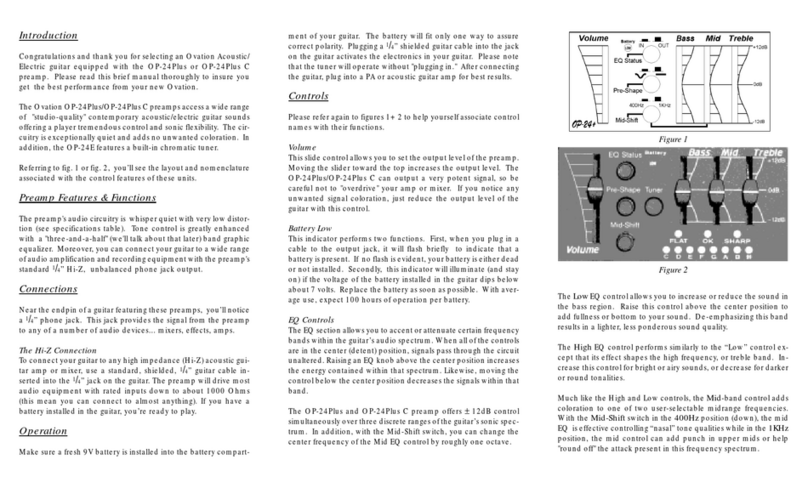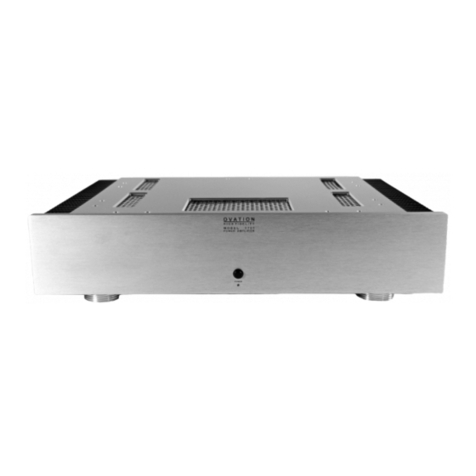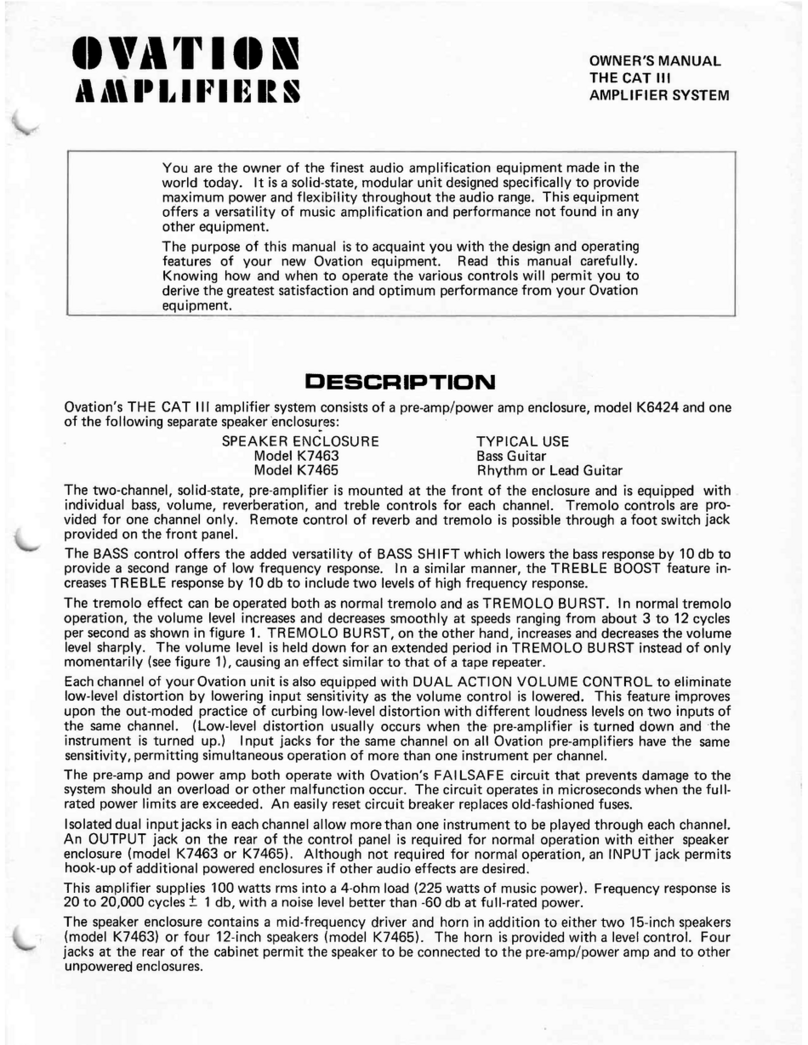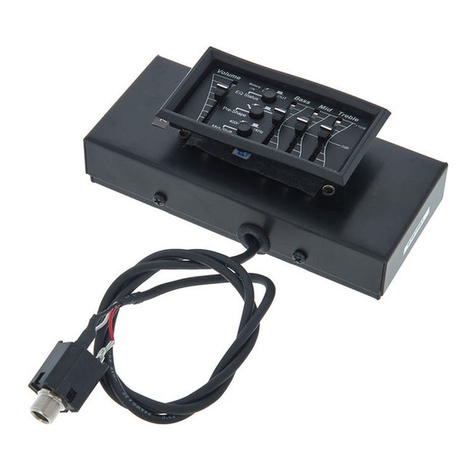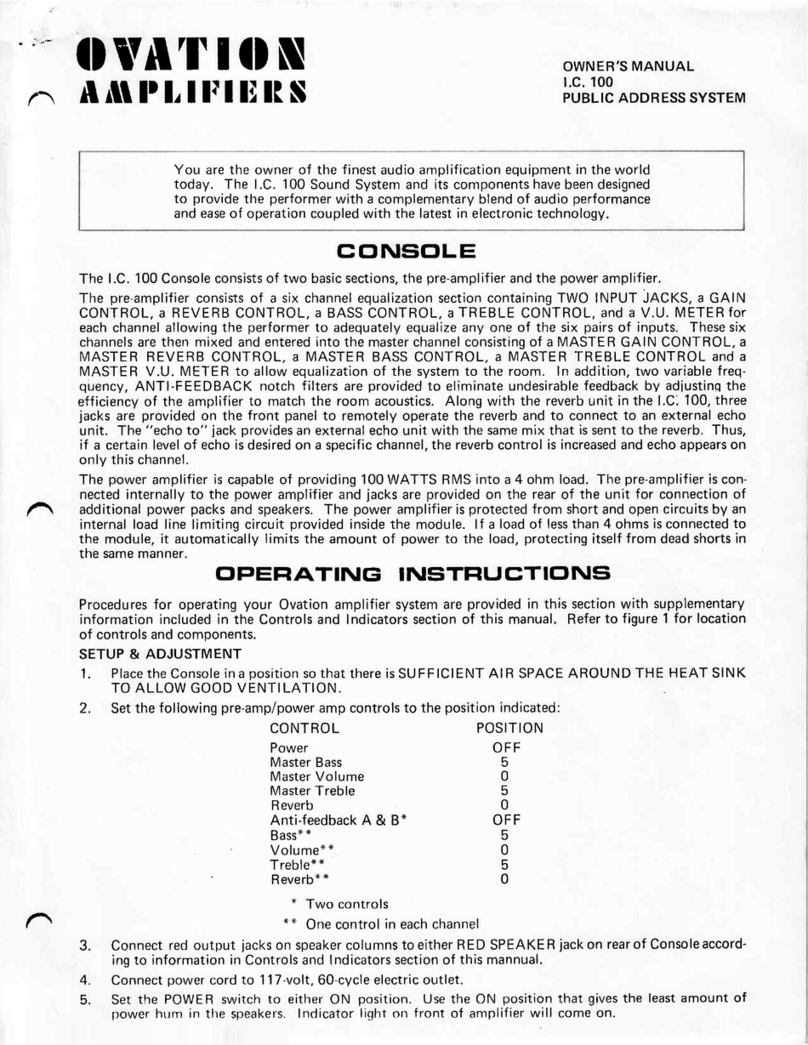Model 1501 Stereo Preamplifier User Manual
w w w . o v a t i o n h i f i d e l i t y . c o m P a g e 9 | 20
Selecting a Source
To select a source, simply rotate the SELECT dial either clockwise or anti-
clockwise. The green LED associated with the selected source will
illuminate.
Adjusting the Volume
The VOLUME control is located on the RHS of the front panel. Rotate it
clockwise to increase the volume and anti-clockwise to decrease the
volume. When you power up for the first time, set the volume to the 10
o’clock position so the volume is initially low.
Muting the output
To mute both pairs of outputs (balanced and unbalanced) and the
headphones, depress then release the mute pushbutton. Depress and
release the button again to restore signal to the outputs. When the
preamplifier is muted, the red MUTE LED on the front panel will illuminate.
Using the Record Loop (also known as the ‘Tape Monitor’) Function
Depress the REC LOOP button to activate the record loop function. This
works by sending a buffered version of the selected input signal out to your
recording device (e.g. a legacy tape deck or DAT recorder) before the
preamplifier volume control. After the signal has been recorded, a replica is
fed back to preamplifier via the ‘Record IN’ connectors on the rear panel
and through to the volume control so that you can confirm that the recording
is taking place and is distortion free.
Note carefully the following points with respect to REC LOOP operation: -
1. If you have selected the ‘Recorder’ input signal source, the ‘REC LOOP’
function is DISABLED by the preamplifier’s microprocessor and will not
engage
2. You can only select the REC LOOP function if either one of the Phono, CD,
Tuner, Music Server or Aux signal sources are selected
3. For the function to work correctly, you must connect both the REC OUT to
your recorder input and recorder output to the REC IN on the preamplifier so
that the audio signal loop is completed.

